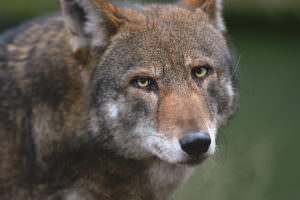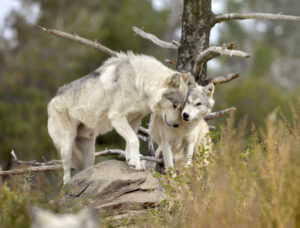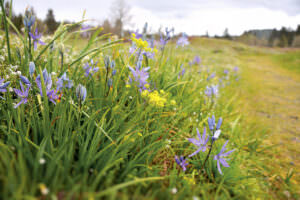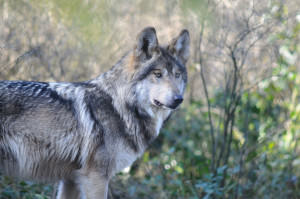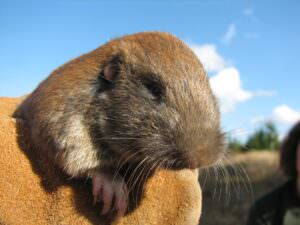Conservation
Wolf Haven supports the restoration of wolves in their historical ranges; actively discourages wolves and wolfdogs being privately-owned as pets; and provides fact-based information to the public. Wolf Haven also partners with various organizations in the ongoing study and restoration of prairie habitat and native species.
Wolves
Wolf Haven instructs thousands of people annually on wolf ecology and the importance of maintaining a balanced ecosystem, complete with top predators. This type of education dispels many myths surrounding wolves and is vital to promoting human acceptance of them. From dispelling misinformation surrounding wolves to the false impression that they make good pets, Wolf Haven promotes understanding of this often misunderstood keystone predator. Science-based knowledge also empowers wolf supporters to speak out for wolves with their legislators.
Wolf Haven was a member of the Wolf Working Group that provided recommendations to WDFW as they developed the Washington Wolf Conservation and Management Plan. This plan was approved and adopted by the Washington Fish and Wildlife Commission in 2011. The state plan is applicable across all of Washington state, regardless of if wolves are listed under the federal Endangered Species Act or not. Wolf Haven is also currently a member of the Wolf Advisory Group, tasked with advising WDFW on the implementation of the adopted wolf management plan.
Saving Animals From Extinction
Saving Animals From Extinction (SAFE) programs are a cooperative effort between the U.S. Fish and Wildlife Service (USFWS) and the Association of Zoos and Aquariums (AZA), as well as non-AZA participants like Wolf Haven. A SAFE program is designed to oversee the population management of an endangered species in captivity and to enhance their conservation in the wild. The program, originally called Species Survival Plan (SSP), was developed in 1981 to help ensure the survival of selected species, most of which are threatened or in danger of extinction in the wild.
Wolf Haven participates in federally-managed SAFE programs designed to ensure the continued health and survival of two endangered wolf species: the American Red wolf and the Mexican wolf. Wolf Haven is a breeding facility for both programs and because of the secluded nature of our sanctuary, the wolves raised here are prime candidates for release into the wild. To date, ten litters of Mexican wolf pups and five litters of American Red wolf pups have been born at Wolf Haven. Three packs (22 wolves) of Mexican wolves and two American Red wolves have been released from Wolf Haven into the wild over the past 20 years.
Prairie
Coastal prairies are one of the rarest ecosystems in Washington and over 90% of highly threatened prairie land has already been lost. Once native prairie is converted to other use, such as housing or industry, it becomes inhospitable and often uninhabitable to its original residents. As prairies dwindle, so do the number of native species who thrive on them. Developed land rarely, if ever, returns to prairie. Conservation and restoration of remaining prairie fragments is crucial to the long-term survival of this unique ecosystem.
While we are known for our work in wolf conservation, we are committed to involvement in other conservation opportunities when they arise. In addition to our wolf sanctuary, Wolf Haven’s acreage includes 36 acres of rare Mima mound prairie, 8 acres of Garry oak/conifer woodlands, and 8½ acres of wetlands ranges. This mosaic of habitats makes up the Patrick Vance Dunn Memorial Prairie, which offers unique opportunities for restoration and reintroduction of regionally rare species. The primary goal of the Wolf Haven Prairie Project is restoration of its prairie and strengthening its role as a host for rare and threatened prairie species.
